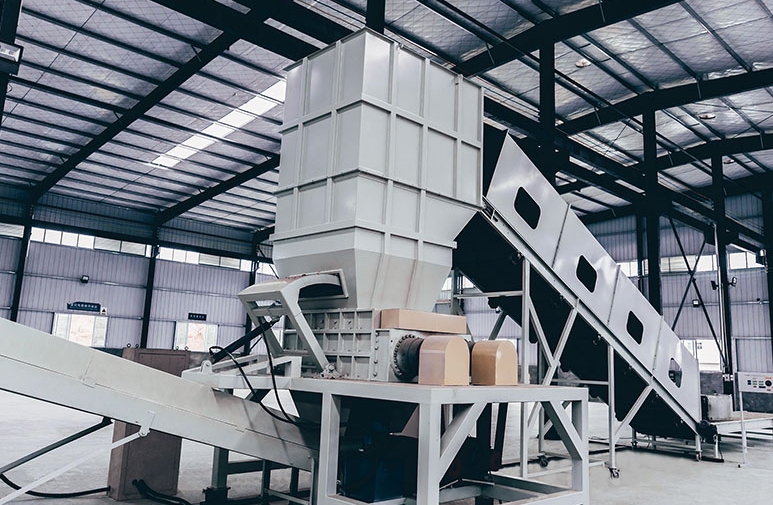The used household appliance disassembly line adopts a fully physical dry recycling model. The core process is built around three key links: "disassembly of electronic components - multi-stage crushing - precise sorting", with no chemical reagents involved throughout the process, achieving green treatment.
In the electronic component disassembly stage, dedicated automated equipment is used to disassemble used household appliances. The focus is on separating core components such as circuit boards, motors, and compressors. At the same time, basic components like plastic casings and metal frames are initially classified to lay the foundation for subsequent targeted processing. During the disassembly process, the integrity and efficiency of component separation are ensured through equipment positioning and clamping devices.
The multi-stage crushing process adopts the collaborative operation of a two-shaft shredder and a granulator: First, the disassembled circuit boards are crushed into block-shaped materials of 50-100 millimeters by a two-shaft shredder. Then, they are sent to a granulator for further refinement. Through the cooperation of high-speed rotating knives and screens, the materials are gradually crushed into uniform particles of less than 20 millimeters. The particle size is precisely controlled by the screen hole diameter to ensure the subsequent sorting effect. During the crushing process, the equipment is equipped with an overload protection device to prevent impurities with excessively high hardness from causing damage to the equipment.
The precise sorting process adopts a combined technology of "air separation + high-voltage electrostatic separation" : Firstly, through an air separation device, taking advantage of the density differences among particles of different materials, a directional airflow is introduced to initially separate the light non-metallic particles (such as resin and plastic) from the heavier metal particles (such as copper and iron). The light particles are then conveyed to the designated collection bin by the airflow. The initially separated metal mixed particles are then sent into the high-voltage electrostatic separator. By taking advantage of the differences in charge of different metals in the high-voltage electric field, non-magnetic metal particles such as copper and aluminum are adsorbed onto the electrode plates, while ferromagnetic metals are separated separately through the accompanying magnetic separation device. Ultimately, precise sorting of multiple metals and non-metals is achieved, ensuring efficient separation of different materials.
In addition, to control the environmental impact during the process, the production line is equipped with a two-in-one dust removal system composed of a cyclone dust collector and a pulse dust collector: The cyclone dust collector first preliminarily collects the dust generated in the crushing and sorting stages, removing larger particle dust. The remaining fine dust is filtered by the pulse dust collector through high-pressure pulse blowing, which knocks the dust adhering to the surface of the filter bags onto the ash hopper, achieving efficient purification of the dust. At the same time, the entire equipment is enclosed in a closed shell and wrapped with sound insulation materials to control the noise transmission during operation, ensuring that both dust and noise emissions comply with relevant national environmental protection standards, thus forming a complete process system of "process treatment + environmental protection support".



 Analysis of the Core Processes of the Used Household Appliance Disassembly Line-Industry News-Jiangxi Mingxin Metallurgical Equipment Co., Ltd.
Analysis of the Core Processes of the Used Household Appliance Disassembly Line-Industry News-Jiangxi Mingxin Metallurgical Equipment Co., Ltd.